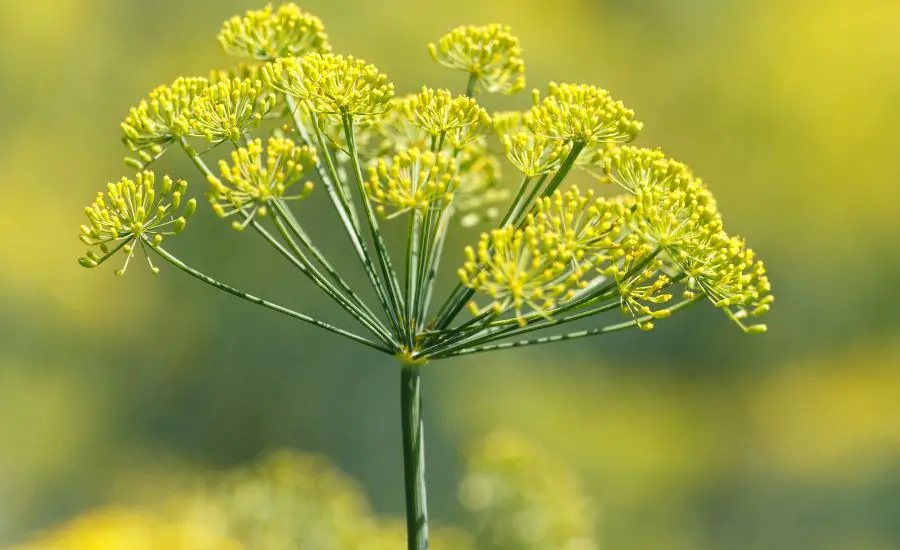Harvesting fennel might sound like a simple thing to do, but you should know that harvesting it at the wrong time and in the wrong way can aggravate the situation.
When to harvest fennel determines what part of the plant you are going to harvest and what type of fennel you are growing.
In this article, we are going to tell you everything about the right timing to harvest fennel bulbs, seeds, and fennel plants.
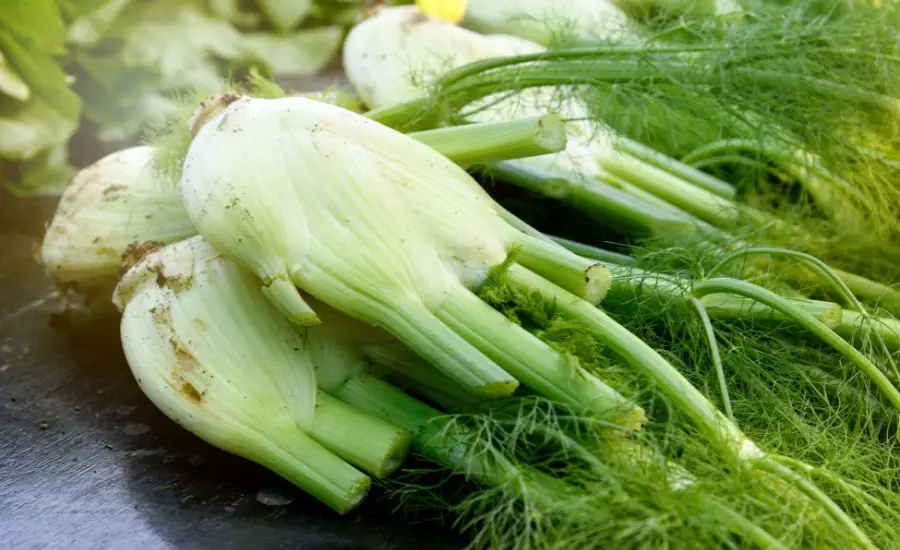
Contents
- 1 What is fennel?
- 2 When to harvest fennel?
- 3 Types of fennel
- 4 How to harvest fennel fronds
- 5 How to harvest fennel seeds
- 6 Harvesting fennel bulbs
- 7 How to harvest fennel leaves
- 8 Storing fennel
- 9 Preserving fennel
- 10 How do you harvest fennel so it keeps growing?
- 11 How long can you leave fennel in the garden?
- 12 Can you still eat fennel after it flowers?
- 13 Conclusion
What is fennel?
Fennel is used for its medicinal properties. It has been traditionally used to treat digestive issues such as bloating, gas, and indigestion.
It is also used to promote lactation in breastfeeding mothers, and to relieve menstrual cramps.
The fennel bulb is a crisp and crunchy vegetable that has a mild licorice or anise flavor.
It’s commonly used in salads, soups, stews, and roasted dishes.
The leaves of the fennel plant are also edible and can be used as a herb in cooking. The seeds of the fennel plant are used as a spice and are commonly found in sausages, bread, and other dishes.
Overall, fennel is a versatile and flavorful plant that has both culinary and medicinal uses.
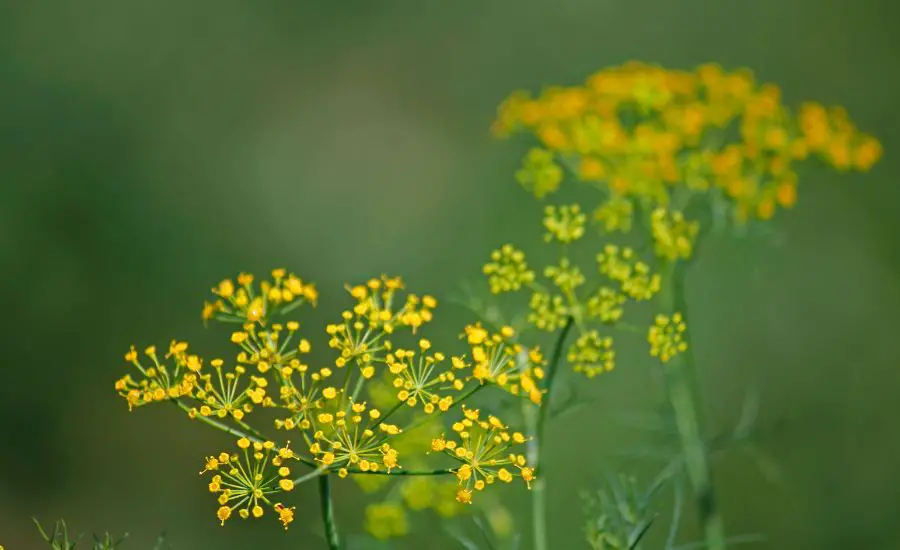
When to harvest fennel?
Actually, when to harvest fennel depends on what part of the plant you are going to harvest.
For example, you can harvest fennel bulbs and fennel stems as soon as they get swollen.
You can harvest fennel seeds in the late summer or when seeds fall in early autumn.
And you can start harvesting fennel flowers when the plants are flowering already. You are able to harvest fennel leaves when fennel plants are in their growing cycle.
Types of fennel
There are four main types of fennel:
- Florence fennel: also known as finocchio, this type of fennel has a bulbous base that is harvested for culinary use. It has a sweet, anise-like flavor and a crunchy texture, and is often used in salads, soups, and roasted dishes.
- Common fennel: this type of fennel grows tall and produces seeds that are used in cooking and baking. The fronds can also be used as a garnish or herb. Common fennel has a stronger flavor than Florence fennel and is typically used in spice blends, sausages, and pickling.
- Bronze fennel: this type of fennel has bronze or purple-colored foliage and produces seeds and fronds that are used in cooking. It has a milder flavor than common fennel and is frequently used as an ornamental plant in gardens. Also known as sweet fennel.
- Wild fennel: Wild fennel is a type of fennel that grows wild in many parts of the world, including the Mediterranean region, Asia, and North America. It is a perennial herb that can grow up to 6 feet tall and has feathery, fern-like leaves and yellow flowers.
All three types of fennel belong to the same species, Foeniculum vulgare, but have different characteristics and uses in the kitchen and garden.
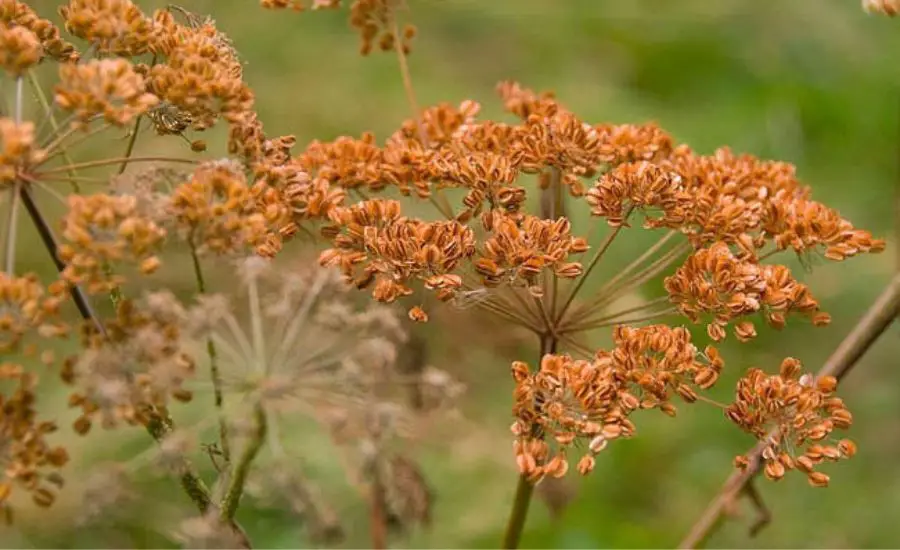
How to harvest fennel fronds
To harvest fennel fronds, follow these steps:
- Wait until the fennel plant has grown to a reasonable size, usually when it is at least 6-8 inches tall.
- Look for the feathery green leaves at the top of the fennel plant. These are the fronds you will be harvesting.
- Using scissors, cut off the fronds at the base of the stem. You can harvest as many fronds as you need, but be careful not to take too many, as this can stunt the plant’s growth.
How to harvest fennel seeds
Fennel seeds are usually harvested in late summer or early autumn. That’s why you should wait until the blooming cycle and be ready to harvest fennel seeds when the flower heads turn brown.
- Cut off the flower heads with a pair of scissors or something sharp.
- Place the flower heads upside down in a paper bag and tie the bag closed with a string or rubber band.
- Hang the bag in a cool, dry place for a week or two, until the fennel seeds have thoroughly dried out and separated from the flower heads.
Also, you can leave a few flower heads on the fennel plant for them to self-seed.
Harvesting fennel bulbs
The best time to harvest Florence fennel bulbs is when they become 3-4 inches in diameter (or about the size of a tennis ball). Don’t let them grow bigger, or they are going to be tough.
Here is how to harvest bulb fennel:
- Gently loosen the soil around the base of the fennel plant using a garden fork or shovel, being careful not to damage the bulb.
- Grasp the bulb at the base and gently pull it up from the soil. If the bulb is still firmly attached, use a knife or garden shears to cut it free from the roots.
- Rinse the bulb under cool water to remove any dirt or debris.
- Cut off the stalks and fronds from the bulb, leaving about an inch of the stalk attached to the bulb.
- Trim off any roots and dry the outer layers using a sharp knife or vegetable peeler.
- The bulb fennel is now ready to be used in recipes or stored in the refrigerator for up to a week.
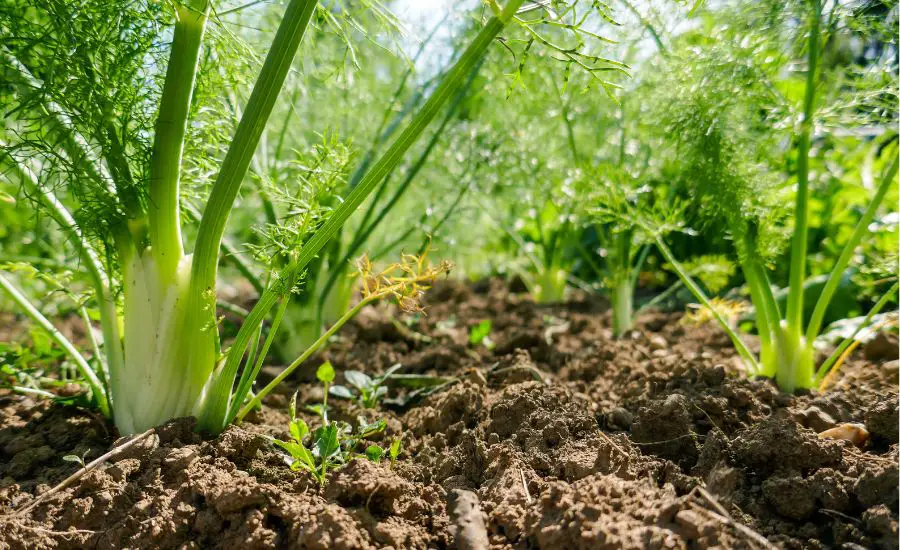
How to harvest fennel leaves
When fennel is established, you can harvest fennel leaves and use them fresh during the next growing season and cycle. But once the leaves turn brown, it’s too late to harvest them.
Here is how to harvest fennel leaves:
- Simply snip off the leaves, but be sure not to take too much, as you want the plants to keep growing.
Also, the type of fennel that you are growing is also playing a big role in the timing of harvesting them.
Storing fennel
Bulbs can be stored in a refrigerator or in an airtight container for several weeks.
Fronds can keep for up to 4-5 days in a refrigerator, wrapped in a plastic bag.
Preserving fennel
They are several ways to preserve fennel
Freeze fennel
Fennel can be blanched and frozen for later use.
To freeze fennel, first, trim the tops and bottoms of the bulbs, remove any tough outer layers, and slice the bulbs into thin pieces.
Blanch the sliced fennel in boiling water for 2-3 minutes, then plunge it into ice water to stop the cooking process.
Drain the fennel well, place it in an airtight container or freezer bag, and store it in the freezer for up to 6 months.
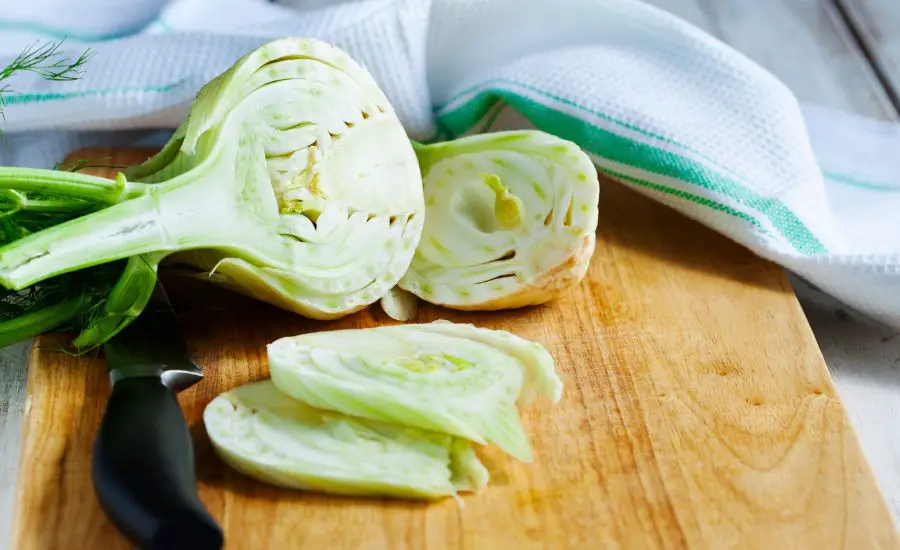
Drying fennel
Fennel leaves can be dried, but it provides losing their flavor. But you should know, fresh harvested fennel leaves are better to use right after harvest action, also they can be eaten raw by putting them in a salad since raw fennel tastes better.
Dry it in a cool, airy place.
Some people recommend making fennel tea from dried leaves.
For better taste and flavor, you should dry fennel seeds after harvesting them. They can keep their flavor for a year or more in a dehydrator or container to air dry.
How do you harvest fennel so it keeps growing?
For harvesting the fennel, you need to cut it down about two feet from the soil using a sharp knife or gardening shears. Alternatively, take out all plant parts before cutting down the root.
And, as we mentioned previously unless you are growing it as an annual, don’t take more than 1/3 of the plant’s leaves at any given time, so it will keep growing.
How long can you leave fennel in the garden?
Fennel is a short-lived perennial that comes back to life from seed almost every year. And these plants can easily be replaced within 3-5 years.
Can you still eat fennel after it flowers?
Yes, you can eat fennel, but the flavor and texture may be different from before it flowered.
Fennel that has flowered will have a stronger, more licorice-like flavor and a tougher texture than younger fennel.
The flowers and seeds of fennel are also edible and can be used to add flavor to dishes.
If you plan to use fennel after it has flowered, it is best to harvest it as soon as possible after the flowers appear, as the plant will continue to produce more flowers and seeds and the bulb will become woody and less flavorful.

Conclusion
There are plenty of ways of using fennel, and now you know how to harvest them, so you can use them as you want.
We hope that our article helped you with harvesting fennel and its parts. Enjoy the fennel!
Learn More: How to Know When Fennel Is Ripe

